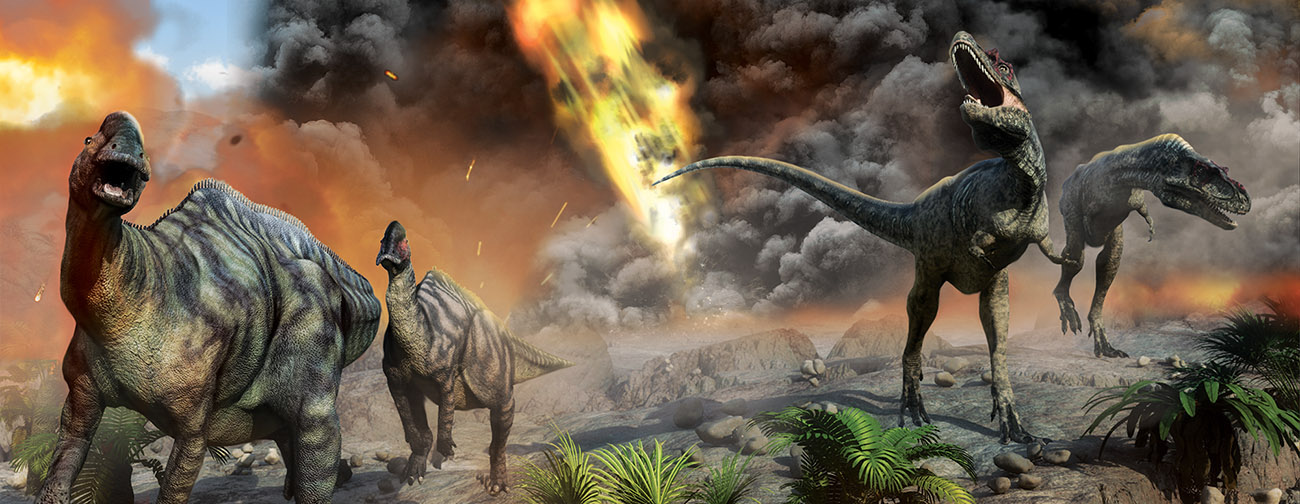Dinosaurs went extinct about 65 million years ago (at the end of the Cretaceous Period), after living on Earth for millions years.
The dinosaurs’ long period of dominance certainly makes them unqualified successes in the history of life on Earth.
Abundant fossil bones, teeth, trackways, and other hard evidence have revealed that Earth was the domain of the dinosaurs for at least 230 million years. But so far, not a single trace of dinosaur remains has been found in rocks younger than about 66 million years. At that point, as the Cretaceous period yielded to the Paleogene, it seems that all nonavian dinosaurs suddenly ceased to exist.
Along with them went fearsome marine reptiles such as the mosasaurs, ichthyosaurs, and plesiosaurs, as well as all the flying reptiles known as pterosaurs. Ancient forests seem to have flamed out across much of the planet. And while some mammals, birds, small reptiles, fish, and amphibians survived, diversity among the remaining life-forms dropped precipitously.
In total, this mass extinction event claimed three quarters of life on Earth.
One of the most well-known theories for the death of the dinosaurs is the Alvarez hypothesis, named after the father-and-son duo Luis and Walter Alvarez. In 1980, these two scientists proposed the notion that a meteor the size of a mountain slammed into Earth 66 million years ago, filling the atmosphere with gas, dust, and debris that drastically altered the climate.
However, other scientists maintain that the evidence for a massive meteor impact event is inconclusive, and that the more likely culprit may be Earth itself.
Ancient lava flows in India known as the Deccan Traps also seem to match nicely in time with the end of the Cretaceous, with massive outpourings of lava spewing forth between 60 and 65 million years ago. Today, the resulting volcanic rock covers nearly 200,000 square miles in layers that are in places more than 6,000 feet thick. Such a vast eruptive event would have choked the skies with carbon dioxide and other gases that would have dramatically changed Earth’s climate.
Now, a new study led by the University of Texas at Austin has confirmed the theory by finding hard evidence in the hundreds of feet of rocks that filled the impact crater within the first 24 hours after impact.
Core samples taken at the crater also contain charcoal and jumbles of rock brought in by the tsunami’s backflow. However, sulphur is conspicuously absent. They are all part of a rock record that offers the most detailed look yet into the aftermath of the catastrophe which wiped out 75 per cent of life on Earth.
The discovery supports the theory the asteroid impact vaporised the sulphur-bearing minerals present at the impact site and released it into the atmosphere, where it wreaked havoc on the Earth’s climate, reflecting sunlight away from the planet and causing global cooling.
Researchers estimate at least 325 billion metric tons of sulphur would have been released by the impact. That’s about four orders of magnitude greater than that spewed out during the 1883 eruption of Krakatoa – an event which cooled the Earth’s climate by an average of 1C for five years.
Although the asteroid impact created mass destruction at the regional level, it was this global climate change that caused the mass extinction, killing off the dinosaurs along with most other life on the planet at the time.
“The real killer has got to be atmospheric,” Professor Gulick said. “The only way you get a global mass extinction like this is an atmospheric effect.”

